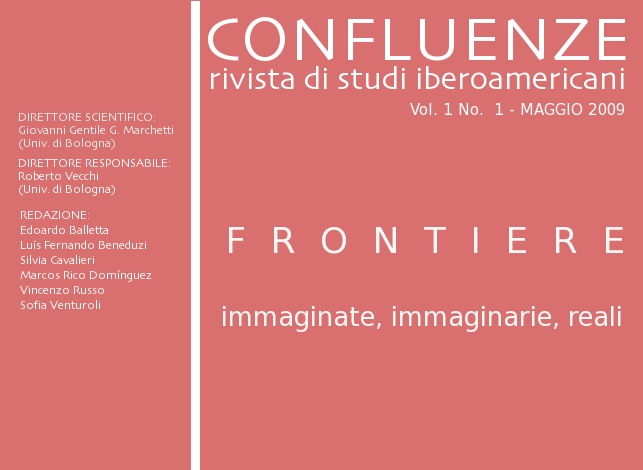América: de línea de frontera a líneas de figura, de poesía, de memoria
DOI:
https://doi.org/10.6092/issn.2036-0967/1417Resumen
The lines, the simplest way to represent borders, take part in the construction of power relations in the Western world, transformed into images and metaphors of poetic and narrative discourse. This paper aims to transcend this conception, starting from the traditional use -in western culture- as marks of the borders to underline its importance in the construction of visual and scriptural narratives, redrawn as symbols in the representations of non-western communities. Through a single case study - the allegory of America as a woman - the paper examines the transformation of this image from the sixteenth century cartography to the foundational national discourse of the nineteenth century. Las líneas, los trazados más sencillos que configuran representativamente las fronteras, participan sinuosas de la construcción de las relaciones de poder en el mundo occidental, transformándose en imágenes y metáforas del discurso poético y narrativo. Este ensayo pretende traspasar este trayecto, partiendo del uso tradicional en la cultura occidental de las líneas como marcas de frontera para su actuación en la construcción de narrativas visuales y escriturales, redibujadas como símbolos en las representaciones de las comunidades no-occidentales. Por medio de un único ejemplo – la alegoría de América como mujer –, perseguiré las transformaciones de esta imagen desde la cartografía del siglo XVI hasta el discurso de fundación nacional del siglo XIX.Descargas
Cómo citar
Ferreira, C. (2009). América: de línea de frontera a líneas de figura, de poesía, de memoria. Confluenze. Rivista Di Studi Iberoamericani, 1(1), 43–60. https://doi.org/10.6092/issn.2036-0967/1417
Número
Sección
DOSSIER
Licencia
Derechos de autor 2009 Cándida Ferreira
Los derechos de autor y publicación de todos los textos de esta revista pertenecen a sus respectivos autores sin restricciones.
Esta obra está bajo una licencia de Creative Commons Reconocimiento 4.0 Internacional (código legal completo).
Véase también nuestra Open Access Policy.
Metadatos
Todos los metadatos del material publicado son de dominio público y pueden ser utilizados por cualquier persona de forma gratuita. Esto incluye las referencias.
Los metadatos -incluidas las referencias- pueden reutilizarse en cualquier medio sin autorización previa, tanto con fines lucrativos como no lucrativos. Rogamos a los usuarios que faciliten un enlace al registro de metadatos original.






